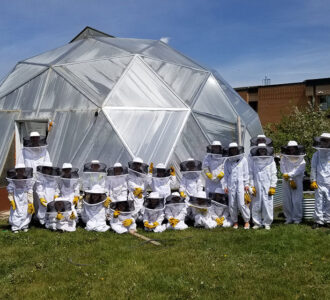Salman Shaheen talks to teachers from around the world to find out the ways in which they are successfully tackling learning losses caused by the pandemic.
Even before the pandemic, the UN was already warning progress was too slow to meet Sustainable Development Goal 4 of universal quality education by 2030. With over 1.5 billion learners impacted by school and university closures, many with vastly unequal access to the tools and support they need for remote learning, COVID has made that mountain harder still to climb. But all around the world teachers on the coalface are working hard to close the learning gaps the pandemic has widened and ensure no child is left behind.
Educators from all over the world tell Elevate that some, and often many, of their students have measurably fallen behind on their learning during the COVID lockdown. The reasons for this vary.
In Ghana, Daniel Kofi Amaavi, a teacher at Ada Foah Presby Basic, says a lack of supervision by parents and a lack of learning materials at home was a significant factor. Mexican teacher Ezequiel Chavez Colli points to a lack of tech, family troubles and financial hardships, and the failure to create equal opportunities for learning that meet the educational needs of students. Ming Yao Hsiung, a teacher at Taipei Wanfu Elementary School in Taiwan, also sees financial hardship as a factor preventing some parents from supporting students in their online learning.
Wendell C. Cabrera, a former teacher in the Philippines, says teachers and students alike were unprepared for the abrupt transition to online learning and many parents on low incomes were unable to adapt to support students at home because they still had to go out to work. In Romania, Nadina Nicolici, a teacher at Lorin Salagean Technical High School, says that beyond limited tech access some students just saw online learning as “a vacation”, connecting to online classes but never turning on their cameras or mics. Once again, family hardships with parents telling them to go out and work instead of going to school, led to students not valuing their education.
Egyptian teacher Maey Elnimer sees internet connectivity and shared household devices as an issue, whilst noting that those students who were more independent learners seemed to be making better progress than those who required more support and found themselves falling behind on some tasks during lockdown.
Assessing learning losses
Teachers have responded to these issues by assessing students when schools reopened to find out what they had learned during lockdown and what additional support they needed. This included formal tests as well as class observation.
Elnimer says regular formative and summative assessments continued online so teachers were able to keep track of student learning.
“One of the benefits of online learning was the many assessment tools available, some of which were in the form of games which truly attracted students,” Elnimer says. “The more formal assessment or test tools were used but we were aware that with some students, help was received during tests. That is why once students returned to school, teachers assessed for learning gaps and identified areas to be addressed.”
Tackling learning gaps
Teachers report a variety of different measures and pedagogical methods they have employed to compensate for learning losses and close gaps for those students who fell behind during COVID. In Ghana, Amaavi has been working hard to put on extra classes, while in Taiwan Hsiung has slowed the pace of teaching, focused on individual learning and used digital tools to boost engagement. In the Philippines, Cabrera notes that teachers are prioritising those who are failing behind based on an assessment of the work they are submitting.
Elnimer says some teachers spent time with smaller groups whether in school or online after school to give additional support to students who needed it. Most teachers applied scaffolding techniques to support students learning new concepts and building upon prior knowledge. They mostly focused on essential syllabus content and foundational topics from the lockdown period to ensure that upcoming content that relied on these concepts was covered. Teachers dedicated a remarkable amount of their free time to helping students and creating support materials.
“The school has since moved to blended learning which we found was helping support asynchronous learning by allowing students access to materials and videos year-round and allowed them to revisit topics they needed extra help with,” Elnimer says.
Conversely, Nicolici says that in her Romanian school, one of the first things she realised was that when school returned physically there was a large gap in what the school could offer in terms of technology compared with how they were used to learning at home.
“While online, students made use of technology 100%,” Nicolici says. “While in the physical classroom, they had in front of them an old chalkboard, some shabby textbooks and that was it. I understood that I had to bring technology in my classes, and that is what I did. I switched from traditional teaching and learning to using technology on a daily basis. I can say at the beginning it was not at all easy, as I had to adapt all the materials I had, and to make them digital, but it worked. I learned which platforms to use, I learned how to create or adapt my own materials, and now I can say my classes are a real pleasure for my students.”
She says since she has been integrating tech into her lessons fewer and fewer students have been missing classes and their engagement and motivation has increased.
She also worked to close learning gaps by pairing students who fell behind during lockdown with those who did not so they could mentor their peers.
Teachers across the world report that their efforts to close learning gaps through these methods are proving successful, but they are aware that it is an ongoing effort and students will need continuous support. It will be an uphill struggle for many, but teachers are working tirelessly to support their students and they are keen to support each other, whether it’s a colleague in the next classroom, in the next town, or on the other side of the world. Teachers everywhere face the same battle to undo the damage caused by global education’s greatest crisis and ensure quality learning for all.



